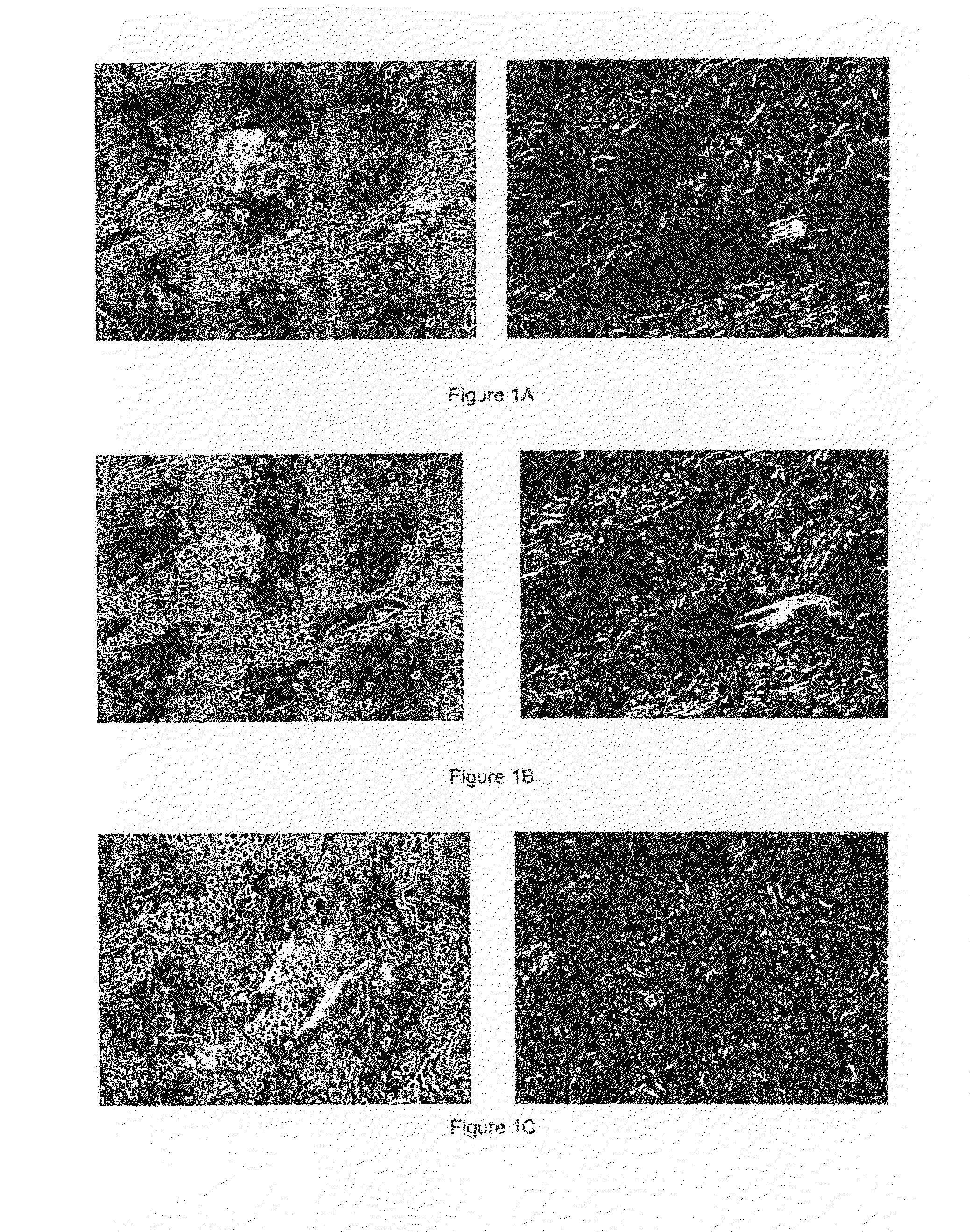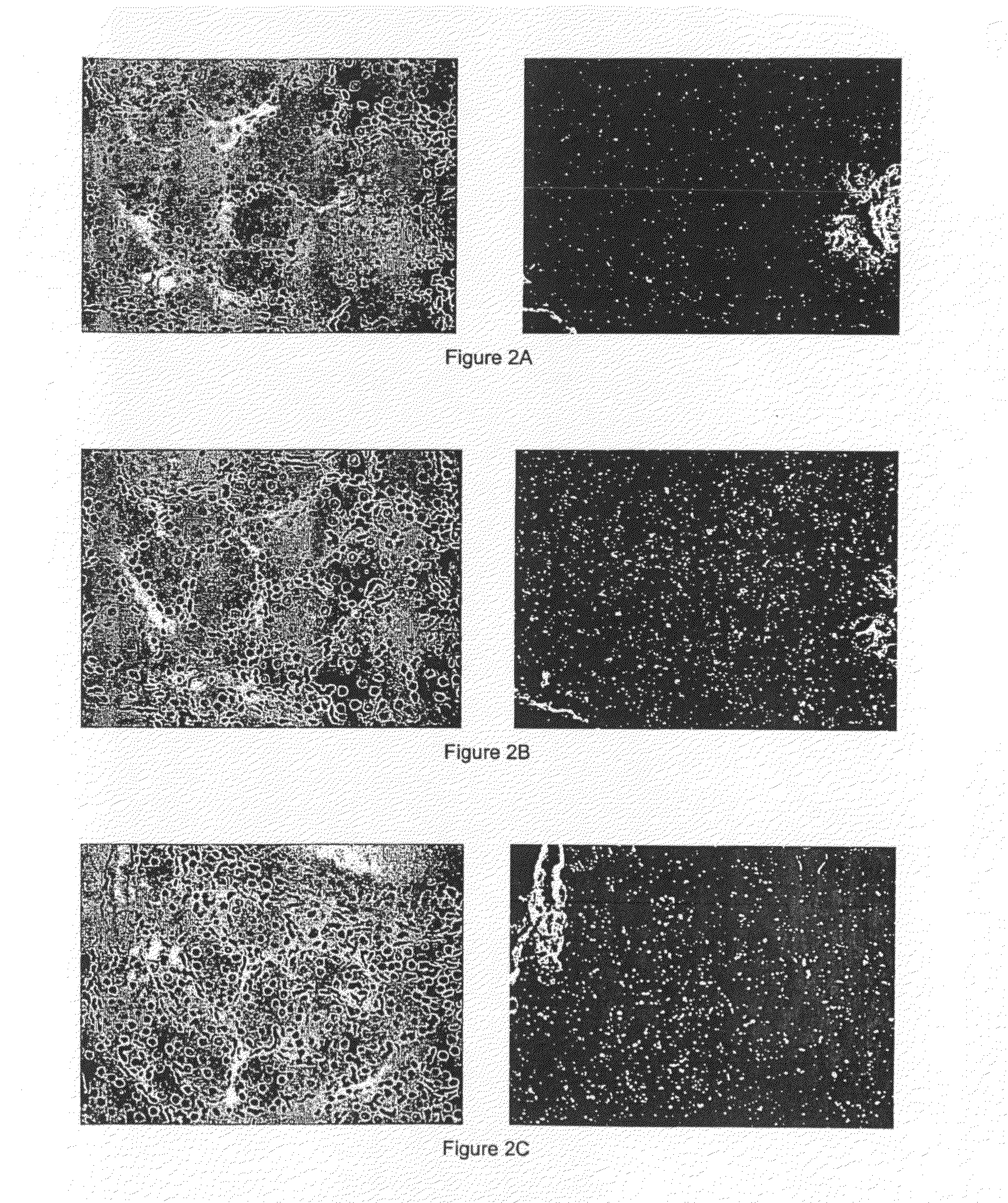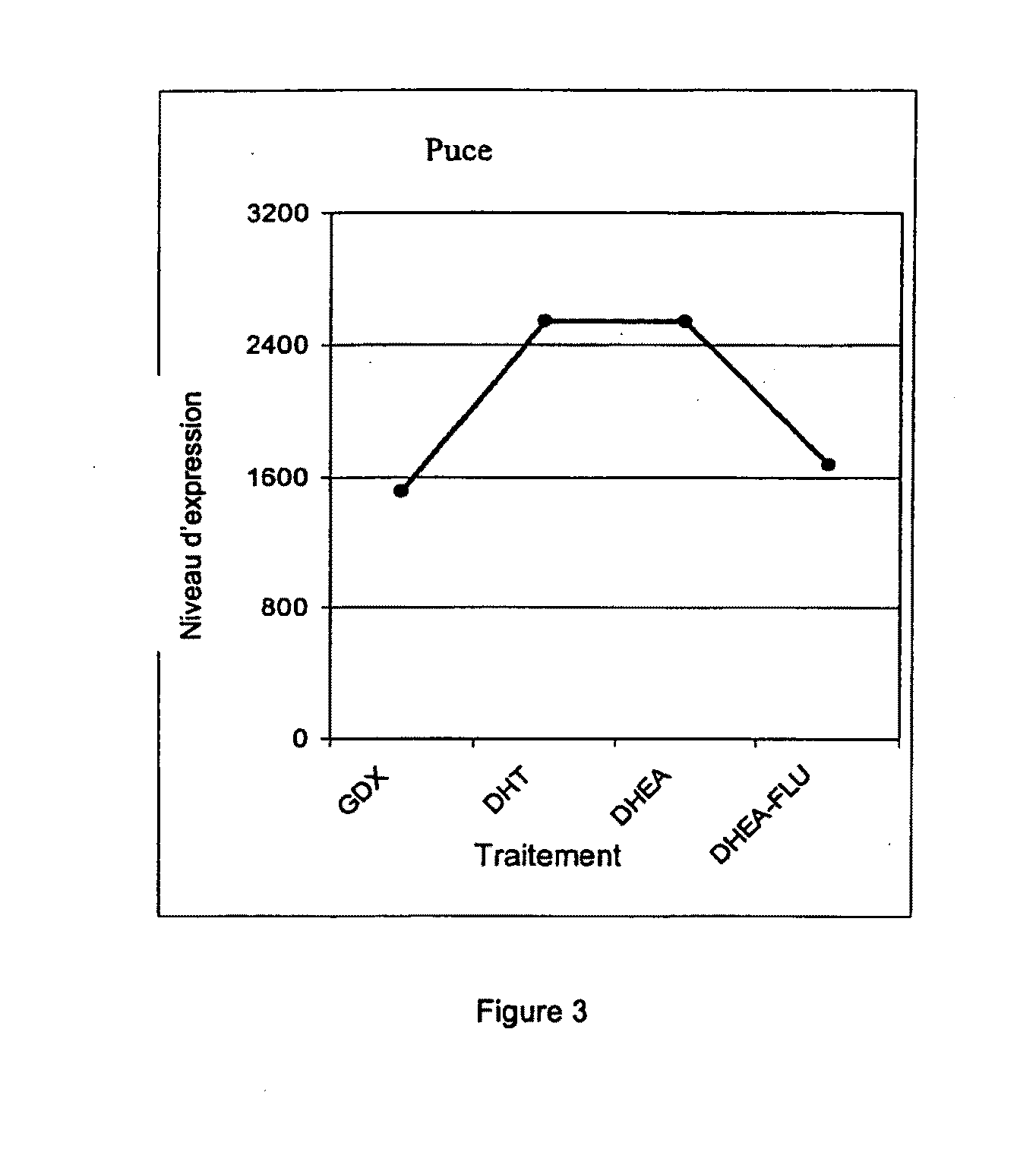Modulators of the transporter ABCD3 for treating acne or hyperseborrhea
- Summary
- Abstract
- Description
- Claims
- Application Information
AI Technical Summary
Benefits of technology
Problems solved by technology
Method used
Image
Examples
example 1
Expression of the Transporter ABCD3 in the Human Sebaceous Gland and in the Human Epidermis
[0088]Human sebaceous glands were separated from the human epidermis by treatment with dispase and dissection under a binocular lens. Samples of total RNA were prepared from the sebaceous glands and from the epidermis.
[0089]The expression of the genes was analyzed on an Affymetrix station (microfluidic model; hybridization oven; scanner; computer) following the protocols provided by the company. Briefly, the total RNA isolated from the tissues is transcribed to cDNA. From the double-stranded cDNA, a cRNA labeled with biotin is synthesized using T7 polymerase and a precursor NTP conjugated to biotin. The cRNAs are then fragmented to small sized fragments. All the molecular biology steps are checked using the Agilent “Lab on a chip” system in order to confirm the good efficiencies of the enzymatic reactions. The Affymetrix chip is hybridized with the biotinylated cRNA, rinsed and then fluorescen...
example 2
Identification of the ABCD3 Protein in the Human Sebaceous Gland by Mass Spectrometry
[0092]Human sebaceous glands were separated from the human epidermis by treatment with dispase and microdissection under a binocular lens. Protein extracts were prepared from the sebaceous glands and from the epidermis. These protein extracts were subjected to enzymatic hydrolysis with pig trypsin in order to generate peptides which were separated by nanobore HPLC and then analyzed by MS tandem electrospray mass spectrometry (Q star XL Applied Biosystem). The search for and the identification of peptides and then proteins are performed using the subcellular fraction “enriched with plasma membrane”, and are carried out using a search engine such as Mascot and SpectrumMill (starting with public protein databanks (SwissProt version Aug. 2, 2005). The subcellular fraction is obtained according to the following method. The dissected sebaceous glands or the epidermis are rinsed with mannitol and Hepes. Th...
example 3
Expression of ABCD3 in the Sebaceous Gland of Mouse Skin by “In Situ Hybridization”
[0098]Methods:
[0099]Sense and anti-sense probes were prepared from the ABCD3 gene by incubation of the linearized gene (2 μg) with 63 μCi of [35S]UTP (1250 Ci / mmol; NEN, Massachusetts, USA) in the presence of T7 or T3 RNA polymerase. The in situ hybridization was carried out on a mouse tissue fixed with formaldehyde and embedded in paraffin. Sections (4 μm wide) were then deparaffinized in toluene and rehydrated by an alcohol gradient. After drying, the various sections were incubated in a prehybridization buffer for two hours. The hybridization was carried out overnight in a hybridization buffer (prehybridization buffer with 10 mM DTT and 2×106 cpm RNA / μl 35S-labelled) at 53° C. The excess probe was removed and the sections were inclined in an LM1 emulsion (Amersham Biosciences, UK) and exposed in the dark at 4° C. for at least one month. The sections were then developed and counterstained with hemat...
PUM
| Property | Measurement | Unit |
|---|---|---|
| Transport properties | aaaaa | aaaaa |
| Level | aaaaa | aaaaa |
Abstract
Description
Claims
Application Information
 Login to View More
Login to View More - R&D
- Intellectual Property
- Life Sciences
- Materials
- Tech Scout
- Unparalleled Data Quality
- Higher Quality Content
- 60% Fewer Hallucinations
Browse by: Latest US Patents, China's latest patents, Technical Efficacy Thesaurus, Application Domain, Technology Topic, Popular Technical Reports.
© 2025 PatSnap. All rights reserved.Legal|Privacy policy|Modern Slavery Act Transparency Statement|Sitemap|About US| Contact US: help@patsnap.com



